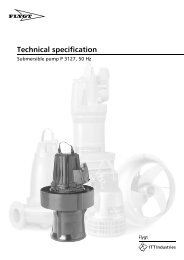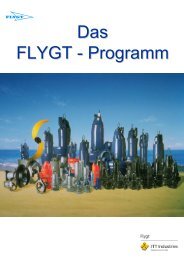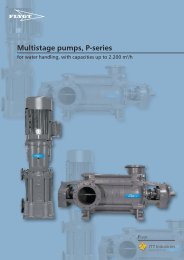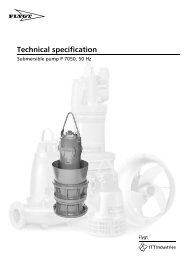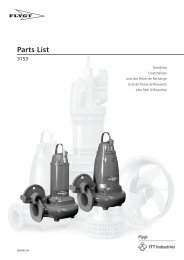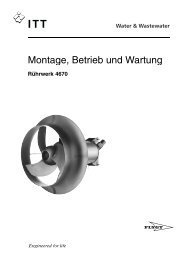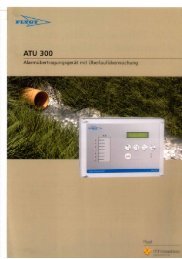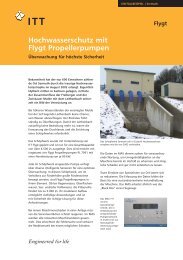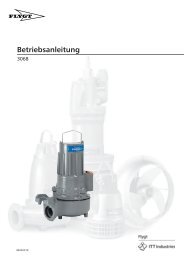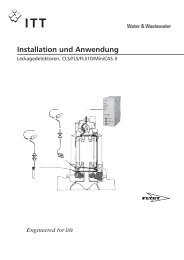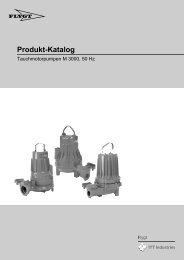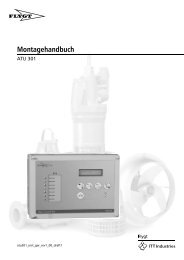Create successful ePaper yourself
Turn your PDF publications into a flip-book with our unique Google optimized e-Paper software.
Conforms to Regulation (EC) No. 1907/2006 (REACH), Annex II - Sweden<br />
1.<br />
<strong>SAFETY</strong> <strong>DATA</strong> <strong>SHEET</strong><br />
IDENTIFICATION OF THE SUBSTANCE/PREPARATION AND OF<br />
THE COMPANY/UNDERTAKING<br />
Product name and/or code<br />
Manufacturer/Distributor<br />
e-mail address of person<br />
responsible for this SDS<br />
Emergency telephone<br />
number (with hours of<br />
operation)<br />
:<br />
:<br />
:<br />
PANSAROL FINISH<br />
PANSAROL FINISH<br />
Akzo Nobel Decorative Coatings,<br />
Staffanstorpsvägen 50,<br />
205 17 Malmö, Sverige,<br />
Tel. 040 - 35 50 00<br />
Fax. 040 - 35 52 23<br />
Internet: www.nordsjo.se<br />
: HSE.SE@akzonobel.com<br />
Product use : Solvent borne coating for interior and exterior use.<br />
2.<br />
HAZARDS IDENTIFICATION<br />
TEL vid olycksfall<br />
112 Giftinformation (dygnet runt).<br />
The product is classified as dangerous according to Directive 1999/45/EC and its amendments.<br />
Classification : R10<br />
R66<br />
Physical/chemical hazards : Flammable.<br />
Human health hazards : Repeated exposure may cause skin dryness or cracking.<br />
Additional warning phrases : Contains 2-butanone oxime, fatty acids, c6-19-branched, cobalt(2+) salts. May<br />
produce an allergic reaction.<br />
3.<br />
COMPOSITION/INFORMATION ON INGREDIENTS<br />
Substances presenting a health or environmental hazard within the meaning of the Dangerous Substances<br />
Directive 67/548/EEC or assigned an occupational exposure limit.<br />
Chemical name<br />
Naphtha (petroleum), hydrotreated heavy 64742-48-9 25 - 50 265-150-3 R10<br />
Xn; R65<br />
R66<br />
Naphtha (petroleum), hydrotreated heavy 64742-48-9 10 - 25 265-150-3 Xn; R65<br />
2-butanone oxime 96-29-7 0 - 1 202-496-6 Carc. Cat. 3;<br />
R40<br />
Xn; R21<br />
Xi; R41<br />
R43<br />
Solvent naphtha (petroleum), light arom. 64742-95-6 0 - 1 265-199-0 R10<br />
Xn; R65<br />
Xi; R37<br />
R66, R67<br />
N; R51/53<br />
Date of issue/Date of<br />
revision<br />
CAS<br />
number<br />
% Number Classification<br />
R66<br />
: 22-11-2009. Page: 1/7<br />
[1] [2]<br />
[1] [2]<br />
[1]<br />
[1] [2]
PANSAROL FINISH<br />
3.<br />
COMPOSITION/INFORMATION ON INGREDIENTS<br />
fatty acids, c6-19-branched, cobalt(2+) salts 0 - 1 Xn; R22<br />
Xi; R38<br />
R43<br />
N; R51/53<br />
zinc bis(2-ethylhexanoate) 136-53-8 0 - 1 205-251-1 Repr. Cat. 3;<br />
R63<br />
N; R50/53<br />
See section 16 for the full text of the R-phrases<br />
declared above<br />
There are no additional ingredients present which, within the current knowledge of the supplier and in the<br />
concentrations applicable, are classified as hazardous to health or the environment and hence require<br />
reporting in this section.<br />
[1] Substance classified with a health or environmental hazard<br />
[2] Substance with a workplace exposure limit<br />
[3] PBT-substance<br />
[4] vPvB-substance<br />
Workplace exposure limits, if available, are listed in section 8.<br />
4.<br />
FIRST AID MEASURES<br />
First-aid measures<br />
General : In all cases of doubt, or when symptoms persist, seek medical attention. Never give<br />
anything by mouth to an unconscious person. If unconscious, place in recovery<br />
position and seek medical advice.<br />
Inhalation<br />
Skin contact<br />
Eye contact<br />
Ingestion<br />
5.<br />
FIRE-FIGHTING MEASURES<br />
Extinguishing media :<br />
Extinguishing media not to<br />
be used<br />
:<br />
:<br />
:<br />
:<br />
Remove to fresh air. Keep person warm and at rest. If not breathing, if breathing is<br />
irregular or if respiratory arrest occurs, provide artificial respiration or oxygen by<br />
trained personnel.<br />
Remove contaminated clothing and shoes. Wash skin thoroughly with soap and<br />
water or use recognised skin cleanser. Do not use solvents or thinners.<br />
Check for and remove any contact lenses. Immediately flush eyes with running water<br />
for at least 15 minutes, keeping eyelids open.<br />
If swallowed, seek medical advice immediately and show the container or label.<br />
Keep person warm and at rest. Do not induce vomiting.<br />
Recommended: alcohol-resistant foam, CO2, powders, water spray.<br />
: Do not use water jet.<br />
Special exposure hazards : Fire will produce dense black smoke. Exposure to decomposition products may<br />
cause a health hazard. Appropriate breathing apparatus may be required.<br />
Cool closed containers exposed to fire with water. Do not release runoff from fire to<br />
drains or watercourses.<br />
6. ACCIDENTAL RELEASE MEASURES<br />
Personal precautions : Exclude sources of ignition and ventilate the area. Avoid breathing vapour or mist.<br />
Refer to protective measures listed in sections 7 and 8. Contain and collect spillage<br />
with non-combustible, absorbent material e.g. sand, earth, vermiculite or<br />
diatomaceous earth and place in container for disposal according to local regulations<br />
(see section 13).<br />
Environmental precautions : Do not allow to enter drains or watercourses. If the product contaminates lakes,<br />
rivers, or sewers, inform the appropriate authorities in accordance with local<br />
regulations.<br />
Methods for cleaning up : Preferably clean with a detergent. Avoid using solvents.<br />
Note: see section 8 for personal protective equipment and section 13 for waste disposal.<br />
Date of issue/Date of<br />
revision<br />
: 22-11-2009. Page: 2/7<br />
[1]<br />
[1]
PANSAROL FINISH<br />
7.<br />
Handling<br />
Storage<br />
HANDLING AND STORAGE<br />
:<br />
:<br />
Vapours are heavier than air and may spread along floors. Vapours may form<br />
explosive mixtures with air. Prevent the creation of flammable or explosive<br />
concentrations of vapours in air and avoid vapour concentrations higher than the<br />
occupational exposure limits.<br />
In addition, the product should only be used in areas from which all naked lights and<br />
other sources of ignition have been excluded. Electrical equipment should be<br />
protected to the appropriate standard.<br />
To dissipate static electricity during transfer, earth drum and connect to receiving<br />
container with bonding strap. Operators should wear antistatic footwear and clothing<br />
and floors should be of the conducting type.<br />
Keep container tightly closed. Keep away from heat, sparks and flame. No sparking<br />
tools should be used.<br />
Avoid contact with skin and eyes. Avoid the inhalation of dust, particulates, spray or<br />
mist arising from the application of this preparation. Avoid inhalation of dust from<br />
sanding.<br />
Eating, drinking and smoking should be prohibited in areas where this material is<br />
handled, stored and processed.<br />
Put on appropriate personal protective equipment (see section 8).<br />
Never use pressure to empty. Container is not a pressure vessel.<br />
Always keep in containers made from the same material as the original one.<br />
Comply with the health and safety at work laws.<br />
When operators, whether spraying or not, have to work inside the spray booth,<br />
ventilation is unlikely to be sufficient to control particulates and solvent vapour in all<br />
cases. In such circumstances they should wear a compressed air-fed respirator<br />
during the spraying process and until such time as the particulates and solvent<br />
vapour concentration has fallen below the exposure limits.<br />
Store in accordance with local regulations. Observe label precautions. Store in a dry,<br />
cool and well-ventilated area. Keep away from heat and direct sunlight.<br />
Keep away from sources of ignition. Keep away from: oxidising agents, strong<br />
alkalis, strong acids.<br />
No smoking. Prevent unauthorised access. Containers that have been opened must<br />
be carefully resealed and kept upright to prevent leakage. Do not empty into drains.<br />
8. EXPOSURE CONTROLS/PERSONAL PROTECTION<br />
Ingredient name Occupational exposure limits<br />
Naphtha (petroleum), hydrotreated<br />
heavy<br />
Naphtha (petroleum), hydrotreated<br />
heavy<br />
Solvent naphtha (petroleum), light<br />
arom.<br />
Occupational exposure controls<br />
AFS (Sweden, 6/2005).<br />
KTV: 600 mg/m³ 15 hour(s).<br />
NGV: 300 mg/m³ 8 hour(s).<br />
KTV: 100 ppm 15 hour(s).<br />
NGV: 50 ppm 8 hour(s).<br />
AFS (Sweden, 6/2005).<br />
KTV: 600 mg/m³ 15 minute(s).<br />
KTV: 100 ppm 15 minute(s).<br />
NGV: 300 mg/m³ 8 hour(s).<br />
NGV: 50 ppm 8 hour(s).<br />
AFS (Sweden, 2005).<br />
KTV: 170 mg/m³ 15 minute(s).<br />
NGV: 120 mg/m³ 8 hour(s).<br />
KTV: 35 ppm 15 minute(s).<br />
NGV: 25 ppm 8 hour(s).<br />
Exposure controls : Provide adequate ventilation. Where reasonably practicable, this should be achieved<br />
by the use of local exhaust ventilation and good general extraction. If these are not<br />
sufficient to maintain concentrations of particulates and solvent vapours below the<br />
OEL, suitable respiratory protection must be worn.<br />
Date of issue/Date of<br />
revision<br />
: 22-11-2009. Page: 3/7
PANSAROL FINISH<br />
8. EXPOSURE CONTROLS/PERSONAL PROTECTION<br />
Respiratory system :<br />
Skin and body<br />
Hands<br />
Eyes<br />
Environmental exposure<br />
controls<br />
:<br />
:<br />
If workers are exposed to concentrations above the exposure limit, they must use<br />
appropriate, certified respirators.<br />
Dry sanding, flame cutting and/or welding of the dry paint film will give rise to dust<br />
and/or hazardous fumes. Wet sanding/flatting should be used wherever possible. If<br />
exposure cannot be avoided by the provision of local exhaust ventilation, suitable<br />
respiratory protective equipment should be used.<br />
Personnel should wear antistatic clothing made of natural fibres or of hightemperature-resistant<br />
synthetic fibres.<br />
Barrier creams may help to protect the exposed areas of the skin but should not be applied once exposure has<br />
occurred.<br />
Physical state<br />
Solubility<br />
Use safety eyewear designed to protect against splash of liquids.<br />
: Do not allow to enter drains or watercourses.<br />
9. PHYSICAL AND CHEMICAL PROPERTIES<br />
:<br />
Liquid.<br />
Flash point : Closed cup: 38°C (100,4°F)<br />
Viscosity Kinematic: 12,87 cm2 :<br />
/s (1287 cSt)<br />
Relative density : 0,971<br />
10. STABILITY AND REACTIVITY<br />
Conditions to avoid<br />
Materials to avoid<br />
Hazardous decomposition<br />
products<br />
11. TOXICOLOGICAL INFORMATION<br />
Toxicokinetics<br />
Absorption : Not available.<br />
:<br />
:<br />
:<br />
:<br />
Insoluble in the following materials: cold water.<br />
Stable under recommended storage and handling conditions (see section 7). When<br />
exposed to high temperatures may produce hazardous decomposition products.<br />
Keep away from the following materials to prevent strong exothermic reactions:<br />
oxidising agents, strong alkalis, strong acids.<br />
Decomposition products may include the following materials: carbon monoxide,<br />
carbon dioxide, smoke, oxides of nitrogen.<br />
Distribution : Contains material which may cause damage to the following organs: blood, kidneys,<br />
liver, gastrointestinal tract, cardiovascular system, upper respiratory tract, skin,<br />
central nervous system (CNS), eye, lens or cornea.<br />
There is no data available on the preparation itself. The preparation has been assessed following the conventional<br />
method of the Dangerous Preparations Directive 1999/45/EC and classified for toxicological hazards accordingly. See<br />
sections 3 and 15 for details.<br />
Exposure to component solvent vapour concentrations in excess of the stated occupational exposure limit may result in<br />
adverse health effects such as mucous membrane and respiratory system irritation and adverse effects on the kidneys,<br />
liver and central nervous system. Symptoms and signs include headache, dizziness, fatigue, muscular weakness,<br />
drowsiness and, in extreme cases, loss of consciousness.<br />
Solvents may cause some of the above effects by absorption through the skin. Repeated or prolonged contact with the<br />
preparation may cause removal of natural fat from the skin, resulting in non-allergic contact dermatitis and absorption<br />
through the skin.<br />
If splashed in the eyes, the liquid may cause irritation and reversible damage.<br />
Contains 2-butanone oxime, fatty acids, c6-19-branched, cobalt(2+) salts. May produce an allergic reaction.<br />
Acute toxicity<br />
Product/ingredient name Result Species Dose Exposure<br />
Date of issue/Date of<br />
revision<br />
: 22-11-2009. Page: 4/7
PANSAROL FINISH<br />
11. TOXICOLOGICAL INFORMATION<br />
2-butanone oxime LD Dermal Rat >2 g/kg -<br />
LD50 Dermal Rabbit 200 uL/kg -<br />
LD50 Oral Rat 930 mg/kg -<br />
LD50<br />
Rat 2702 mg/kg -<br />
Subcutaneous<br />
TDLo Oral Rat 200 mg/kg -<br />
TDLo Oral Rat 600 mg/kg -<br />
Solvent naphtha (petroleum), light arom. LD50 Oral Rat 8400 mg/kg -<br />
Conclusion/Summary : Not available.<br />
Chronic toxicity<br />
Conclusion/Summary : Not available.<br />
Carcinogenicity<br />
Conclusion/Summary : Not available.<br />
Mutagenicity<br />
Conclusion/Summary : Not available.<br />
Teratogenicity<br />
Conclusion/Summary : Not available.<br />
Reproductive toxicity<br />
Conclusion/Summary : Not available.<br />
12. ECOLOGICAL INFORMATION<br />
There is no data available on the preparation itself.<br />
Do not allow to enter drains or watercourses.<br />
The preparation has been assessed following the conventional method of the Dangerous Preparations Directive<br />
1999/45/EC and is not classified as dangerous for the environment but contains a substance or substances dangerous<br />
for the environment. See section 3 for details.<br />
Aquatic ecotoxicity<br />
Product/ingredient name Test Result Species Exposure<br />
96 hours<br />
2-butanone oxime Mortality Acute LC50<br />
843000 to<br />
914000 ug/L<br />
Fresh water<br />
Conclusion/Summary : Not available.<br />
Ecological information<br />
Persistence/degradability<br />
Conclusion/Summary : Not available.<br />
Fish - Fathead<br />
minnow -<br />
Pimephales<br />
promelas - 30<br />
days - 21,2 mm -<br />
0,148 g<br />
Product/ingredient name Aquatic half-life Photolysis Biodegradability<br />
Solvent naphtha (petroleum), light<br />
arom.<br />
- - Readily<br />
PBT : Not applicable.<br />
vPvB : Not applicable.<br />
13. DISPOSAL CONSIDERATIONS<br />
Do not allow to enter drains or watercourses.<br />
Dispose of according to all federal, state and local applicable regulations.<br />
Hazardous waste : The classification of the product may meet the criteria for a hazardous waste.<br />
Date of issue/Date of<br />
revision<br />
: 22-11-2009. Page: 5/7
PANSAROL FINISH<br />
14. TRANSPORT INFORMATION<br />
Transport within user’s premises: always transport in closed containers that are upright and secure. Ensure that<br />
persons transporting the product know what to do in the event of an accident or spillage.<br />
Land - road/railway<br />
UN number<br />
Transport document name :<br />
Special provision 640 : E<br />
ADR/RID Class<br />
Packing group : III<br />
ADR/RID Label<br />
Sea<br />
Proper shipping name<br />
IMDG Class<br />
Packing group : III<br />
IMDG Label<br />
Marine pollutant<br />
Emergency schedules<br />
(EmS)<br />
Air<br />
Proper shipping name<br />
ICAO/IATA Classification<br />
:<br />
:<br />
:<br />
:<br />
:<br />
:<br />
:<br />
:<br />
:<br />
:<br />
UN1263<br />
PAINT<br />
UN number : UN1263<br />
3<br />
PAINT<br />
Special provisions : Not available.<br />
3<br />
No.<br />
F-E, S-E<br />
UN number : UN1263<br />
Packing group : III<br />
PAINT<br />
Special provisions : Not available.<br />
The "viscosity exemption" provisions do not apply to air transport.<br />
ICAO/IATA label<br />
:<br />
15. REGULATORY INFORMATION<br />
EU regulations<br />
Risk phrases<br />
Exempted according to 2.2.3.1.5 (Viscous substance exemption)<br />
3<br />
R10- Flammable.<br />
R66- Repeated exposure may cause skin dryness or cracking.<br />
Safety phrases : S2- Keep out of the reach of children.<br />
S23- Do not breathe vapour or spray.<br />
S24- Avoid contact with skin.<br />
S46- If swallowed, seek medical advice immediately and show this container or label.<br />
S51- Use only in well-ventilated areas.<br />
Other EU regulations<br />
: The product is classified and labelled for supply in accordance with the Directive<br />
1999/45/EC as follows:<br />
:<br />
Additional warning phrases : Contains 2-butanone oxime, fatty acids, c6-19-branched, cobalt(2+) salts. May<br />
produce an allergic reaction.<br />
Date of issue/Date of<br />
revision<br />
: 22-11-2009. Page: 6/7
PANSAROL FINISH<br />
15. REGULATORY INFORMATION<br />
Additional warning phrases<br />
(CEPE)<br />
: Not applicable.<br />
The information in this Safety Data Sheet is required pursuant to Annex II to Regulation (EC) No 1907/2006.<br />
16. OTHER INFORMATION<br />
CEPE Classification : 1<br />
Full text of R-phrases<br />
referred to in sections 2 and<br />
3 - Sweden<br />
Date of issue/Date of<br />
revision<br />
Version<br />
Notice to reader<br />
:<br />
:<br />
:<br />
R10- Flammable.<br />
R40- Limited evidence of a carcinogenic effect.<br />
R63- Possible risk of harm to the unborn child.<br />
R21- Harmful in contact with skin.<br />
R22- Harmful if swallowed.<br />
R65- Harmful: may cause lung damage if swallowed.<br />
R41- Risk of serious damage to eyes.<br />
R37- Irritating to respiratory system.<br />
R38- Irritating to skin.<br />
R43- May cause sensitisation by skin contact.<br />
R66- Repeated exposure may cause skin dryness or cracking.<br />
R67- Vapours may cause drowsiness and dizziness.<br />
R50/53- Very toxic to aquatic organisms, may cause long-term adverse effects in the<br />
aquatic environment.<br />
R51/53- Toxic to aquatic organisms, may cause long-term adverse effects in the<br />
aquatic environment.<br />
22-11-2009.<br />
10<br />
FOR PROFESSIONAL USE ONLY<br />
IMPORTANT NOTE The information in this data sheet is not intended to be exhaustive and is based on the<br />
present state of our knowledge and on current laws: any person using the product for any purpose other than<br />
that specifically recommended in the technical data sheet without first obtaining written confirmation from us<br />
as to the suitability of the product for the intended purpose does so at his own risk. It is always the<br />
responsibility of the user to take all necessary steps to fulfill the demands set out in the local rules and<br />
legislation. Always read the Material Data Sheet and the Technical Data Sheet for this product if available. All<br />
advice we give or any statement made about the product by us (whether in this data sheet or otherwise) is<br />
correct to the best of our knowledge but we have no control over the quality or the condition of the substrate<br />
or the many factors affecting the use and application of the product. Therefore, unless we specifically agree in<br />
writing otherwise, we do not accept any liability whatsoever for the performance of the product or for any loss<br />
or damage arising out of the use of the product. All products supplied and technical advice given are subject<br />
to our standard terms and conditions of sale. You should request a copy of this document and review it<br />
carefully. The information contained in this data sheet is subject to modification from time to time in the light<br />
of experience and our policy of continuous development. It is the user's responsibility to verify that this data<br />
sheet is current prior to using the product.<br />
Brand names mentioned in this data sheet are trademarks of or are licensed to AkzoNobel.<br />
Head Office<br />
Akzo Nobel Decorative Coatings B.V, Rijksstraatweg 31, 2171 AJ Sassenheim, the Netherlands<br />
Date of issue/Date of<br />
revision<br />
: 22-11-2009. Page: 7/7



